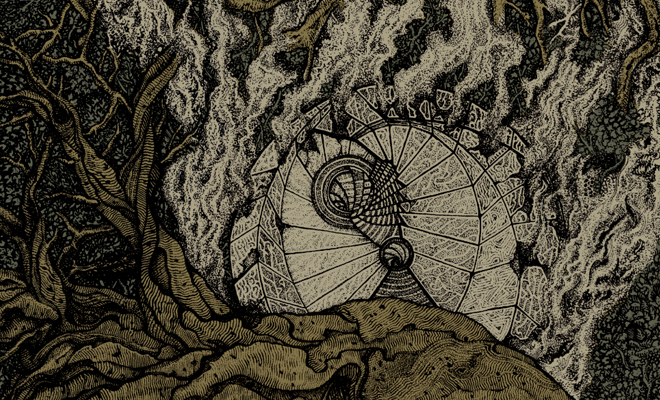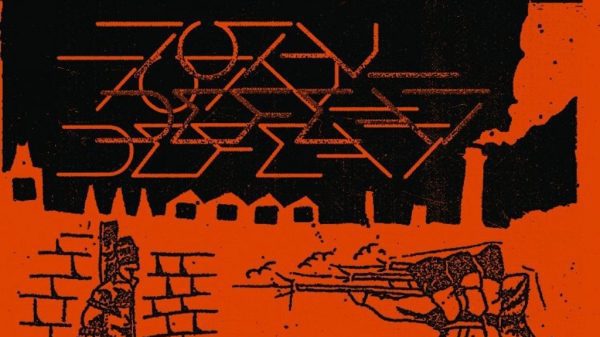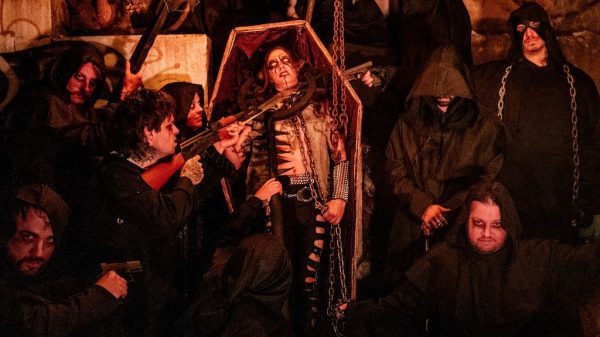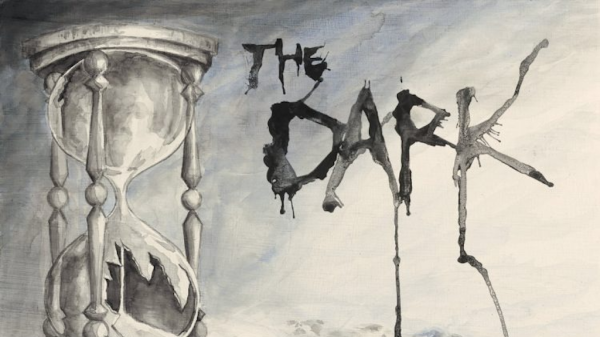This kind of relates to the previous question. For Ravenous Solemnity, what was the writing process like? Did you record any differently? This is the third major installment where Miltos Schimatariotis (Northside Studio) has been involved so at this point you must trust his ear with your art.
THANOS: Most of the songs were written as pre-production, from a distance. I would send the songs to John via email with some standard guidelines and he would then go to the studio, writing his parts and sending them back to me. Not the best way to write, but it was very important in building up almost 70% of the album. Then we rehearsed two or three times and we recorded the songs after one week or so. That was fast, I have to say.
We should blame John for his ultimate professionalism and also for being impatient to record the drums for this one. I remember him telling me at our first meetings, “What the hell were you thinking when writing this material?” And then he was playing the songs without a break! He recorded the drums in three days giving his best. This time we recorded drums at Studio D with Michael Karpathiotis and the result was more than satisfactory. Miltos and I have been discussing a lot on Dephosphorus’ recordings in general.
Since I am in Sweden, he and I have to discuss extensively what has to be done and how, let alone how the album should sound. For Miltos, Dephosphorus is a challenge, since he is mostly into electronic related music and not into grindcore and stuff. This time he spent a lot of time and energy for the album and the result is outstanding. We are extremely happy on how things turned out with “Ravenous Solemnity” sound wise and we already think of the next challenge.
Similarly, were there any unintended consequences of sound/engineering on this one (like Axiom’s accidental rawness paying off hugely) which you notice contributing to the records praise. Is everything as it should be?
THANOS: There is nothing to change in “Ravenous Solemnity”. That is for sure. “Axiom” was raw, yes; but this one reaches another level, sound-wise. Our material is denser and it needs an appropriate sound to breathe and expand.

Source: Viral Graphics Ravenous Solemnity sessions.
Regarding the theme of Ravenous Solemnity, I recall reading in a past interview that the Night Sky Transform cover artwork (channeled through Viral Graphics) was inspired by a vision you had, Panos, which was linked to the being of Dephosphorus.
Seeing as Axiom’s artistic/lyrical themes were realized similarly, is this similar to how Ravenous Solemnity’s art and concepts were generated? How much did the past artwork inform this new step?
PANOS: We are now at a point where we have such a smooth collaboration with the people we trust and work with, aka Viral Graphics and Miltos Schimatariotis at Northside Studio, that they take initiative and often work independently in order to help shape up our new material. This is what happened with the artwork. Viral Graphics figured that it was time to move on to a different type of scenery – more planetary, with more colors too – and that suited perfectly our new material and sound. There’s always some interaction on a lyrical and conceptual level.
For example, the drones are a leitmotiv in our concept (from “Knife Missile” to “Ancient Drone”), the stairwell in the center of the front cover is to be linked with “Vicious Infinite Regress”’s lyrics and with the fact that I had M.C. Escher’s artwork in mind when writing them. Or the dagger on the inside, which will also be the design that our new t-shirt sports, was inspired by “Fountain Of Daggers”’s lyrics, which Viral found intriguing.
If you’re willing, could you give us some insight as to what part of the journey this record symbolizes, in the context of Dephosphorus being a metaphorical cosmological vessel in a quest for truth within the multiverse?
PANOS: Each new release unveils a bit more of the Dephosphorus mythos and the underlying dynamics and forces. “Axiom” was more sci-fi orientated and an introduction to our concept with the eponymous track. Having made clear in “Night Sky Transform” and the two split-7”EP’s that there were also socio-political implications (with tracks like “The Astral Putsch” I&II, “Stargazing & Violence” or “Unit”) and that we’re not a “starwars metal” sort of band, “Ravenous Solemnity” is a comprehensive Odyssey.
I would say that our concept has expanded and it also got more concrete and specific as per the link between the cosmic and the planetary, the astronomical and the socio-political, between religious obsolescence and the mysterious infinity that surrounds us.
There is a reflection on the death of Scottish author Ian M. Banks in the notes of Ravenous Solemnity. His quotes are used sparingly within its soundscape. In keeping with the previous question regarding the artistic themes throughout your discography, has his work and its influence been a common thread from the beginning of Dephosphorus’ odyssey for knowledge?
PANOS: Iain M.Banks’ influence on our concept is tremendous and there are references to his work on each one of our releases, starting with “Axiom”. He was and still is after his death one of the most fertile imaginations that have ever walked this earth. It’s a bit of an irony that when we were discussing what the title of the album would be, I had proposed two titles, “Ravenous Solemnity” and another one, the former originating from one of his books.
When we finally chose “R.S.”, little did we know that at the same period (early 2013) Iain was discovering that he was terminally ill with cancer. So, the album was meant to be dedicated to him even before we knew. This is a terrible, terrible loss. R.I.P.
Are there perhaps other authors whom have informed Dephosphorus’ tone in this way?
PANOS: Yes there is another one, Isaac Asimov. His “Foundation” series are probably my favorite books ever. I read them for the first time as a teenager and they opened up my imagination for good. Also, as a kid in the early 80’s I read almost all of Jules Verne books and I must give him credit for introducing me to sci-fi.














